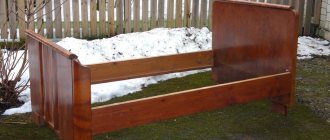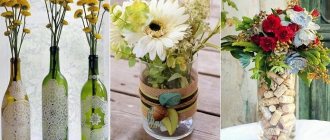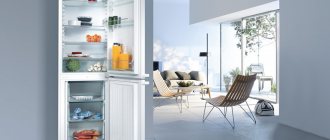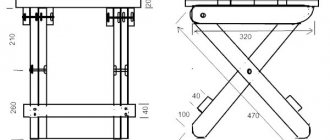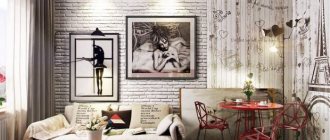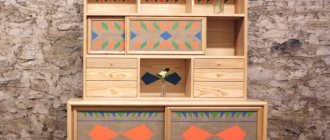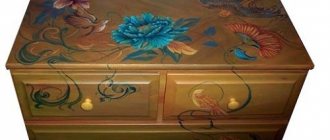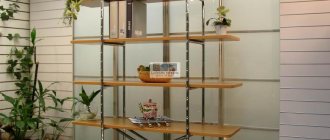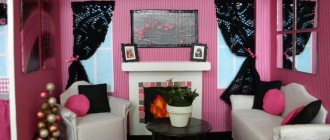It is difficult to imagine an interior in which there are no vases. They can be large and small, round, square and rectangular.
From this article you will learn what you can put in a vase, besides flowers, to create the perfect interior. Diversity allows you to create unique compositions from natural and artificial materials, thereby adding unique accents to the decor.
Branches
If the bouquet placed in a vase has wilted, and there is no possibility of replacing it with a fresh one, try making a beautiful composition from ordinary branches to fill it. Branches for a vase can be used with or without leaves. Most often, apartment owners use the latter option.
After all, a “bouquet” of “bare” branches can stand in a vase for a very long time. The leaves will most likely fall off quickly. The advantage of decor from branches, in addition to durability, is that it can be made completely free. All you have to do is take a walk to the nearest park or forest. A beautiful composition can be made from branches of natural color or painted ones.
Dry plants
The active flowering season passes quickly in most regions, and you want to enjoy the beauty of plants at any time of the year.
Compositions made from dried flowers will help fill the room with warmth on a rainy autumn day.
Collecting and drying plants is not difficult, and you don’t have to grow them yourself. You can put together a composition from wild flowers and tree branches.
Branches
The branches are appropriate in a modern style interior. Compositions with natural wood will bring a feeling of comfort. Branches can be of different shapes, thicknesses and lengths.
All kinds of decor options give room for imagination: you can make compositions with feathers, pine cones, dried flowers. By the way, the decoration is easy to replace if the interior design has changed or you plan to make a thematic composition for the holiday.
Attach paper flowers to the branches:
To match the holiday theme, hang Easter eggs or Christmas balls:
How to process branches for decoration
After the branches are selected, cut down and brought into the house, they must be prepared for further manipulation.
- Dry - 2 weeks indoors, or 7 days on a radiator, or a couple of hours in the oven with the door open.
- Coat with wood preservative. This will extend the life of the branches and protect against the possible appearance of bugs.
Branches prepared in this way can be painted. To do this, select acrylic paint of any color. And don't forget to follow the basic rules:
- Branches should be painted in a well-ventilated area.
- You can adjust the desired color intensity by applying several layers of paint. The more there are, the richer the shade will be. But before applying the next layer, the previous one must dry thoroughly.
- You can add a vibrant shine to the composition and fix the paint with wood varnish.
Now the branches are ready for further decoration. Here are some options:
Leaves
Dry leaves can be part of the composition or the only element in the bouquet. Autumn ones, for example, delight the eye with warm shades.
You can add spikelets, cones, rowan berries and rose hips to the vase.
Tricks to help preserve foliage longer:
- Treatment with a cotton pad soaked in vegetable oil or glycerin.
- Spraying with hairspray.
- Dipping dried flowers into melted wax.
Dry autumn leaves are in perfect harmony with burlap, twine, lace and satin.
They are also great for composing a composition in a low vase.
Grass
Dried herbs add splendor to a bouquet of flowers. The cortaderia is popular. Fluffy pampas grass will fit into a minimalist interior and add sophistication to even a simple room.
Which vase is suitable:
- floor, about 40 cm high;
- elongated and narrow - for one dried flower, voluminous - for a bouquet;
- transparent, in which the grass stems will be visible.
Vintage herbal bouquet with cat's paw plant:
A few blades of grass in a transparent vase are an option for decorating the dining table.
Spikelets
The spikelets create a feeling of airiness and lushness of the composition. They should be collected before the grain falls off. The choice of cereals is varied: it can be rye, barley, oats, buckwheat.
Bread ears are considered a symbol of fertility and long life.
You can use not only natural, but also dyed materials.
Cotton
Cotton sprigs are sold in flower shops. They are used in making interior bouquets and wreaths. Cotton is self-sufficient on its own in a floor and tabletop vase.
And also in the company of other dried flowers and herbs.
Other dried flowers
In general, dried flowers are any dried plants. With their help, you can decorate a room, create a pleasant atmosphere and give the interior a touch of romanticism. Unlike fresh flowers and plants, dried flowers do not require sunlight or water.
Bamboo
Bamboo in the interior will bring a little tropical warmth to a city apartment. This decor makes the interior cozy and unique.
Of course, you can grow live bamboo, but a more practical and durable option is to have treated and varnished stems placed in a large floor vase:
Or shortened stems in a vase on a table or chest of drawers:
Berries
Vibrant red, yellow or blue berries can also be a decoration, great for filling a vase. This seasonal decor can last on the table for several weeks.
Daughter is daddy's love: Yulia Savicheva spoke about her relationship with her father
To allow birds to immigrate to the United States, street lights in cities are dimmed.
Fragments of a biblical scroll were found in a cave in Israel
Decorating with a pattern
The easiest way for those who are just taking their first steps in this matter.
The ornament can be geometric, floral, abstract.
Step-by-step instructions for decorating a vase with patterns.
- — The vase is washed thoroughly.
- — The product is treated with alcohol or acetone (to degrease the surface).
- — The main tone is applied. This is especially true for ceramic vessels. Glass products do not need to be tinted. It is convenient to use spray paint - it dries faster.
- - Patterns are drawn. You can decorate the entire vase, or you can decorate only the neck and bottom. There is an interesting and simple way for those who have not held brushes in their hands - creating patterns using tape. The vase is covered with pieces of tape in a chaotic manner, then the top is painted over with paint. It turns out an interesting texture.
- — Finally, you can add accents using sparkles (glitter).
Feathers
Feathers are not very common decor for domestic interior culture. However, precisely because of its unusual nature, such a “bouquet” will look very impressive and expressive in a vase.
The most beautiful option for a vase, of course, would be peacock feathers. Today such decor can be easily purchased via the Internet. But you can also use regular long feathers to make a “bouquet”, after coloring them first.
Alexander Myasnikov decided to refute popular opinions about the dangers of tea and coffee
Blue is a reliable color: how people dye their hair, depending on their personality type
Cake “Stripe” with butter cream and vanilla pudding: a no-bake dessert
Decoration materials and techniques
To create a beautiful vase yourself, you don’t need to purchase expensive materials. At home you can find quite a few things lying around that can breathe new life into a product.
The most unexpected objects are suitable for creativity:
- — natural materials (branches, wood, shells, stones, sand, fir cones);
- — food products (coffee beans, seeds, cereals, pasta, beans);
- — materials for clothing (string, artificial leather, beads, rhinestones, fabric, ribbons, buttons).
Decoration is appropriate in any technique: pique, stained glass, decoupage, ombre.
For inspiration, you can look at a photo of the vase decor in advance. It is not necessary to copy ideas completely. It is enough for the vase to have a harmonious and finished look.
Florariums
You can also create a whole miniature landscape corner inside a large transparent vase. Place some pebbles at the bottom of the vase for drainage and lay down the soil. Plant some kind of plant in the ground, preferably a succulent. Cover the surface of the soil with colored sand or beautiful pebbles. Place a toy house inside the vase, make paths, ponds, etc. out of sand.
Such beautiful home decor as a florarium can be made not only in a vase. An old cracked round aquarium, for example, is perfect for this purpose. Aquariums nowadays in pet stores, by the way, can also be sold in the form of very large vases.
Look and feel younger: why you need to eat less and less often
The US Heart Association considers black coffee beneficial
Birds in Australia have forgotten their own songs, scientists have to learn them again
Ideas for floor vases
Floor vases in classic use are not intended to hold traditional flowers and therefore always look like works of art. They themselves are a separate decorative element of the interior, which creates the impression of well-being and nobility. But even in this case, you can always update the impression if you use it in an original way.
Dry branches
Dry, rough, large branches in a beautiful decorative vase against the backdrop of a refined interior create a contrast. Thereby diluting the beautiful background with opposite qualities. A non-standard technique, with a dozen thin straight trunks of young trees.
Vase in the hallway - umbrella stand
A floor vase placed at the entrance will become an excellent holder for umbrellas. Such an unusual technique evokes various double feelings, but also has its own originality. Although some manufacturers produce vases specifically for this purpose.
About the history of appearance
Home floor vases trace their origins to utilitarian objects: large jugs (amphoras), known throughout the ancient world. Already in Ancient Greece and Rome they were divided into several types. Simpler amphorae were used for transport, or were used to store water, wine, olive oil, and grain. The vessels reached a volume of 90-100 liters, and they were usually buried in the ground near the house.
Historical proportions Source lonny.com
Table amphoras (two-handled jugs) decorated with patterns and scenes were used in homes for everyday needs. There were also ceremonial amphorae. They were not only painted ceramic; Magnificent examples made of metal (usually bronze), glass, and marble have survived to this day.
Color accent in the bathroom Source design-homes.ru
From these last, ceremonial, amphorae came table and floor vases. In modest urban housing settings, floor decor is rarely considered as a suitable decoration. Many owners are sure that their home is poorly suited for such a massive object; It's a waste of money and space.
This approach is only partly correct. A correctly selected and installed floor vase in a suitable place will add the right accent to an interior decorated in any style.
In the living room Source pinimg.com
